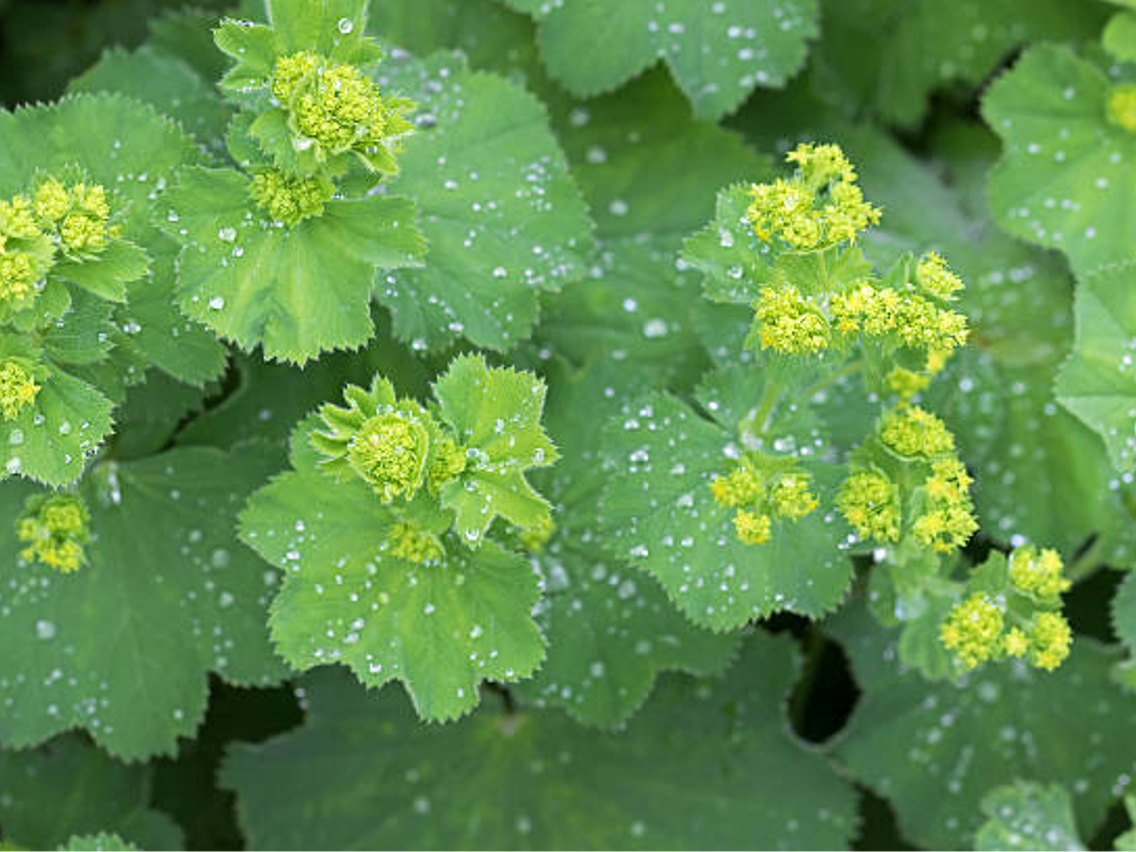Lady’s Mantle - Alchemilla vulgaris

Common Names: Lady’s Mantle, Alchemilla, Common Lady’s Mantle, Lion’s Foot, Dewcup, Goose Foot, Silverweed, Woman’s Mantle, Alchemilla vulgaris, Alchemilla xanthochlora, origin: global, English, Latin
Latin Name: Alchemilla vulgaris
Origin: Africa, Asia, Australia, Europe, South America, North America
Short Introduction
Lady’s Mantle grows along streams, in wet meadows, at woodland edges, and in grassy areas in rural landscapes. It thrives in moist soil, prefers sunny spots or partial shade, and is best propagated by seed or rhizome division in early spring.
Detailed Description
Lady’s Mantle is a unique herb especially valued by women for its benefits on the female reproductive system, supporting well-being from puberty through menopause.
Botanical Information
Lady’s Mantle (Alchemilla vulgaris) is a perennial herb with a short stem, typically reaching up to 40 cm in height, but growing taller at higher elevations. Its leaves are palmate with 7–11 lobes, softly hairy, and approximately round. Early in the vegetation season, the fan-shaped leaves unfold gradually. This leaf shape inspired the folk name "Goose Foot." Notably, in the morning, a dewdrop often gathers in the center of the leaf—a magical feature in folklore, once believed to help alchemists discover the Philosopher’s Stone and thought to be used in the creation of ritual water. The greenish-yellow flowers bloom from May through September.
Origin and Distribution
Lady’s Mantle is native to continents worldwide. Since ancient times, it has been dedicated to the Virgin Mary, as Christians saw a resemblance between the plant’s leaf and her cloak. The leaves are glossy on the underside. Lady’s Mantle is widespread across Europe, the British Isles, Greenland, and northeastern North America. Today, its popularity is once again increasing as its traditional uses regain recognition.
Usage / Dosage
Lady’s Mantle is especially known for its beneficial effects on women’s health and the female body. Lady’s Mantle tea may support relief from many discomforts associated with the female reproductive organs.
It is widely known as an herb that supports fertility. It is used to help regulate the menstrual cycle, making it valuable for women trying to conceive by helping them more accurately track ovulation. Lady’s Mantle also supports endometrial growth and strengthens the uterus. Women hoping to conceive are encouraged to use this herb, particularly during the first half of their menstrual cycle up to ovulation. There are differing perspectives on using Lady’s Mantle during pregnancy; while some recommend drinking it throughout pregnancy for its strengthening and antispasmodic effects on the uterus, others advise caution due to its tannin content, which may promote uterine contractions. Generally, regular use before conception (to strengthen the uterus and support endometrial growth), during the last month of pregnancy, and after giving birth is recommended. After delivery, Lady’s Mantle may aid in restoring, toning, and healing the uterus and helping stop bleeding.
Lady’s Mantle may be used by women from adolescence through menopause. It helps with menstrual irregularities, relieves cramps and excessive bleeding, and has a calming effect on the psyche. For girls and women with irregular periods, it may induce delayed menstruation and help regulate the cycle. During menopause, it is especially helpful for psychological well-being. It is also used for pelvic and ovarian inflammation or vaginal discharge.
Lady’s Mantle is not only for women. Its benefits extend to helping with anemia. Herbal baths made with Lady’s Mantle are used to strengthen muscles and limbs in frail children, with about 200 g of the herb added to the bath. The composition of Lady’s Mantle also supports healthy digestion. Additionally, it can be used in cases of neglected ulcers, purulent wounds, fluid retention, heart support, and fevers. Traditionally, it was used for hernias and, due to its antispasmodic properties, for epilepsy. Lady’s Mantle is highly valued even in the support of multiple sclerosis.
Active Compounds
The main compounds in Lady’s Mantle are tannins (up to 8%) and bitters, which support healthy digestion and proper secretion of gastric juices. The plant also contains essential oils and glycosides.
Traditional Dosage
Lady’s Mantle tea: Add a heaping tablespoon of the dried herb to a quarter liter (250 ml) of water; briefly infuse and steep. Drink 1–4 times daily, one cup per serving.
Warning: Some sources do not recommend use during pregnancy.
